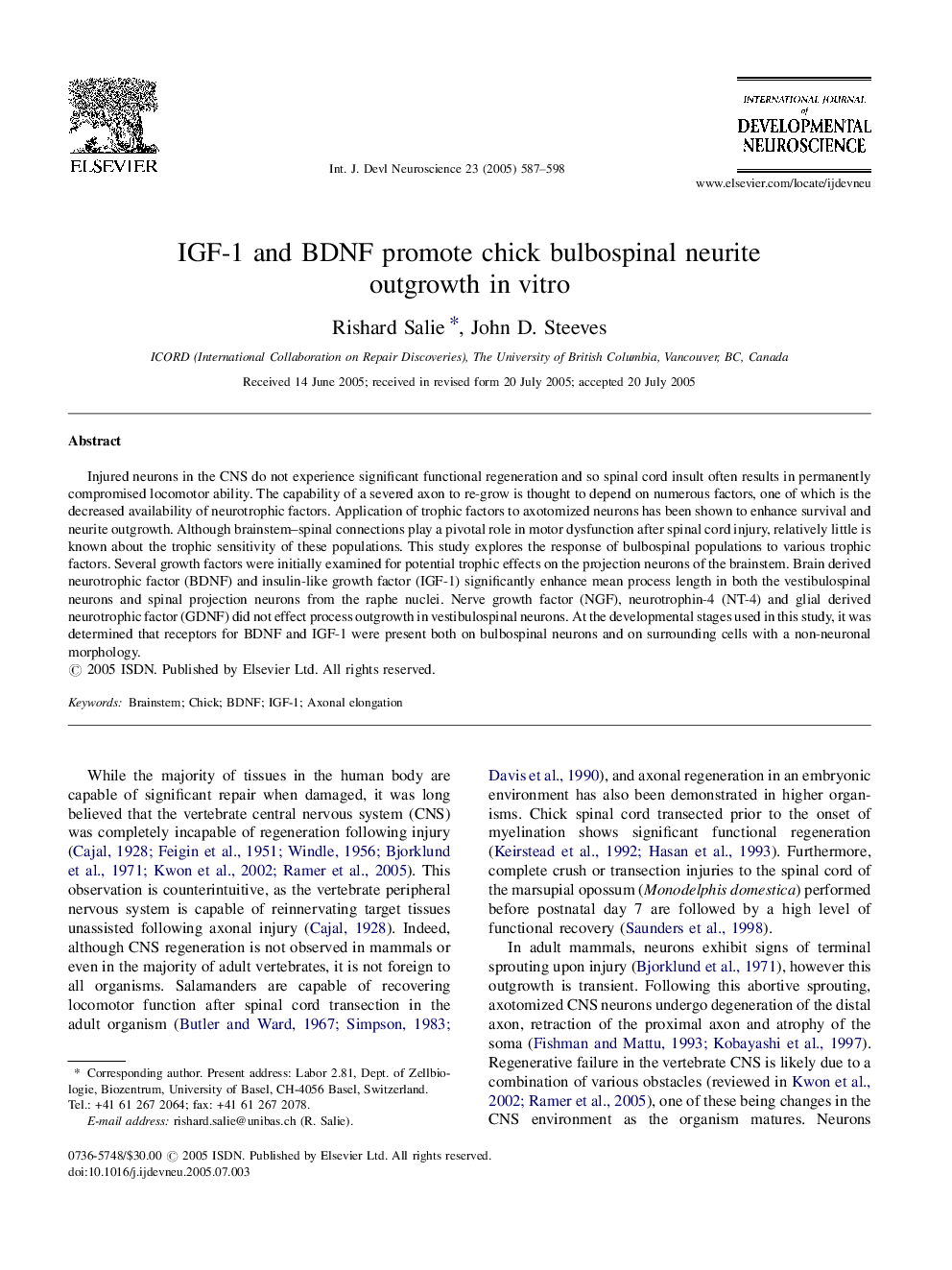| Article ID | Journal | Published Year | Pages | File Type |
|---|---|---|---|---|
| 9933555 | International Journal of Developmental Neuroscience | 2005 | 12 Pages |
Abstract
Injured neurons in the CNS do not experience significant functional regeneration and so spinal cord insult often results in permanently compromised locomotor ability. The capability of a severed axon to re-grow is thought to depend on numerous factors, one of which is the decreased availability of neurotrophic factors. Application of trophic factors to axotomized neurons has been shown to enhance survival and neurite outgrowth. Although brainstem-spinal connections play a pivotal role in motor dysfunction after spinal cord injury, relatively little is known about the trophic sensitivity of these populations. This study explores the response of bulbospinal populations to various trophic factors. Several growth factors were initially examined for potential trophic effects on the projection neurons of the brainstem. Brain derived neurotrophic factor (BDNF) and insulin-like growth factor (IGF-1) significantly enhance mean process length in both the vestibulospinal neurons and spinal projection neurons from the raphe nuclei. Nerve growth factor (NGF), neurotrophin-4 (NT-4) and glial derived neurotrophic factor (GDNF) did not effect process outgrowth in vestibulospinal neurons. At the developmental stages used in this study, it was determined that receptors for BDNF and IGF-1 were present both on bulbospinal neurons and on surrounding cells with a non-neuronal morphology.
Related Topics
Life Sciences
Biochemistry, Genetics and Molecular Biology
Developmental Biology
Authors
Rishard Salie, John D. Steeves,
